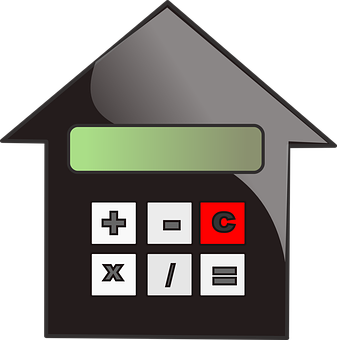Reverse Mortgage Calculator
Use this simple reverse mortgage calculator to determine the total amount owed at the end of the term on a HECM FHA fixed rate reverse mortgage program without personal information required.
How Do You Calculate Reverse Mortgage Total Owed?
Note: This calculator is for estimating purposes only.
The total owed at the end of the given term can be calculated by first, figuring out the annual interest based on monthly compounding.
So, you take the annual interest, if it's 5%, then the numerical version of that is .05, and divide that by the amount of times, per year, that
it compounds. Since we have monthly compounding, that would be 12. Then, you take that result, add one, and take it to the power of 12. So, if you have .05 divided by 12,
you get .00416667, add 1 for 1.00416667 and then take that result to the power of 12 for your actual annual interest rate multiplier. With this example, we end up with
1.0511619.
Each year of the reverse mortgage, that annual interest rate multipler is applied to the balance. So, instead of taking the balance and recalculating with the multiplier each year
you can use the compounding interest formula to calculate the total. So, you have a 20 year term, you take your multiplier to the power of the term. Since we've been using 5% as
our interest rate in the example, and it compounds monthly for a total actual annual interest of 5.11619%, we'll go ahead an compound that by the 20 year term. This gives us a
total owed multiplier of (1.0511619 20) = 2.71264. If you take that 2.71264 and multiply it by the original lump sum of the reverse mortgage, you'll get the total owed. If you
had an original lump sum payout of $200,000, after 20 years, you'd owe $542,528.06.
Other Costs for a Reverse Mortgage
There are other things to consider when looking at a reverse mortgage option. Some of these are included in this list.
Age of borrowers. The age of the primary and co-borrower is going to be a determining factor.
Value of Home. The appraised value of the property is going to determine the amount that can be borrowed. A lending institution will not engage in a reverse mortgage
that has a total amount owed any where near the total value of the property.
Insurance. There are special insurance costs associated with a reverse mortgage to assure the borrower of getting payments, and to protect the lending institution.
Origination Costs. Just like other loans, there are costs associated with the work needed to go into creating the loan.
Amount Owed. The amount you still owe on the house will be factored into how much you can borrow.
